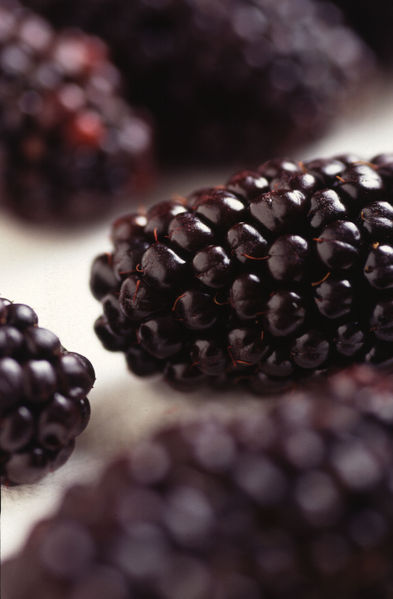
Features
Fruit
Production
Some blackberry varieties make production easier
July 21, 2008 By Fruit & Vegetable
 July 21, 2008 – Piketon, OH – Researchers are working to develop
July 21, 2008 – Piketon, OH – Researchers are working to develop
blackberry cultivars that require less intensive inputs and less
maintenance.
 July 21, 2008 – Piketon, OH – Researchers are working to develop blackberry cultivars that require less intensive inputs and less maintenance.
July 21, 2008 – Piketon, OH – Researchers are working to develop blackberry cultivars that require less intensive inputs and less maintenance.
Shawn Wright, with Ohio State University South Centers at Piketon, is collaborating with John Clark from the University of Arkansas on an evaluation of primocane-bearing blackberries – brambles that require little to no pruning.
“It’s a characteristic of brambles that everyone is looking for,” said Wright. “The fruit is produced on the first-year cane and then the plant is mowed to the ground.
“Primocane-bearing blackberries eliminate the intensive, elaborate pruning common in other blackberry varieties. A grower can cover an acre in a hour as opposed to an entire day.”
Wright said that primocane blackberries are an attractive alternative for fruit growers, not only because of their low maintenance, but because they can easily overcome the production limitations associated with overwintering. They are designed to be mowed back in late winter, resulting in little pruning labor. Additionally, unlike most traditional varieties that bear fruit on the second-year canes, primocane blackberries will bear fruit on one-year-old canes. One drawback is that primocane blackberries currently being evaluated are very thorny, although breeding efforts are under way to eliminate the thorns.
For the past five years, Wright and his colleagues have been evaluating Prime Jim and Prime Jan, two varieties that are now commercially available. Five additional varieties were planted in 2006 and four more in 2007. The purpose of the study is to compare their performance characteristics to determine how well commercial varieties fare under Ohio conditions and to identify new varieties that would be more suitable.
Based on results to date, Wright has found that, although Prime Jan and Prime Jim are suitable, the non-commercial varieties being evaluated are far superior.
“They grow more vigorously, produce higher yields with a larger berry size and the berries have better flavor,” said Wright. “We can get an eight-to-10-gram berry from some of the non-released varieties.”
“If these varieties are released, they may have a place for growers who wish to extend their market because the primocane berries will produce until the first hard frost.”
“The demand for a less labor-intensive blackberry variety is coming directly from the farmers,” said Wright. “They want something that doesn’t have the high labor requirements for pruning.”
Researchers are also evaluating the performance of primocane-bearing red raspberries and black raspberries.
Print this page